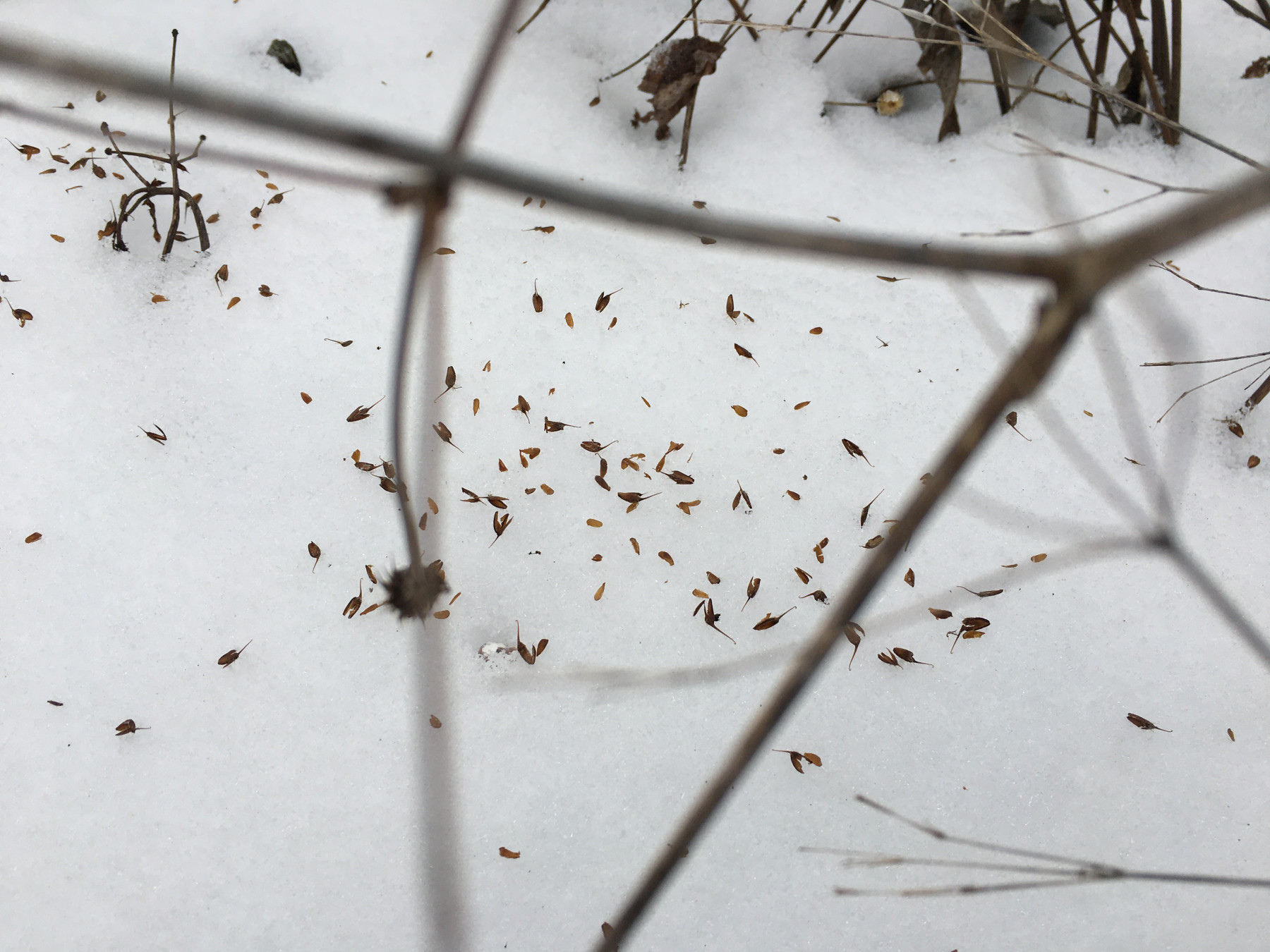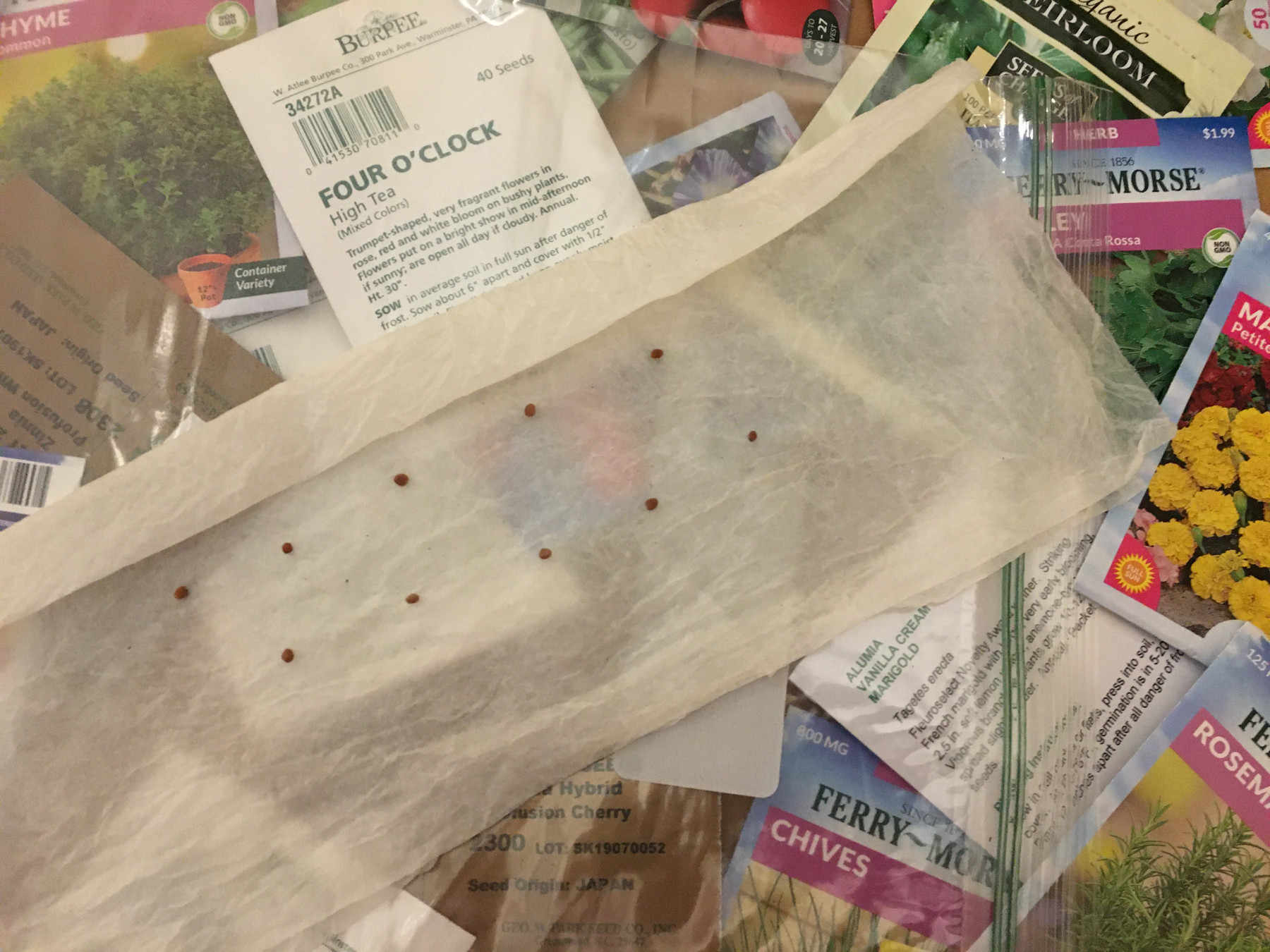
The other day I had the rare privilege of being the first human to hike down a woodland trail after a snowfall. It was just me and (to judge by the tracks) foxes, raccoons, deer, rabbits, squirrels, voles, wild turkeys and coyotes. Then I noticed something else against the pristine white: a scattering of seeds, where some small bustling passer-by had shaken a stalk of dried seed heads. Being a gardener, I immediately thought: I wonder if they’ll sprout?
Those seeds have a shot if they can escape the nibbling voles long enough for the snow to melt so they can settle to the soil. Most seeds of plants that come from places with serious winters aren’t harmed by cold. In fact, many perennials need to go through a period of chilling, technically called vernalization, before they will sprout. And so, of all the places where Midwestern gardeners squirrel away seeds from year to year, the freezer is a popular option.
That only works if A) you can spare space in the freezer (or you regard storing seeds as a higher priority than making room for food) and B) you are organized enough to get the seed packets into the freezer in fall.
Leftover seeds may remain viable—able to sprout—for several years. Over time, fewer and fewer seeds in each batch will remain viable, although some seeds are amazingly durable. The largest variable, apart from age and species, is the care with which they are stored.
It’s ideal to either freeze them or store them at 40 to 50 degrees in darkness with good air circulation. In air that is too warm and dry, like that of a typical centrally heated house in winter, they may dry out. In air that is too damp, they may fall prey to mold or fungus.
Some seeds come sealed in foil or plastic, which helps preserve them, as long as the packet has not been opened. Others have only a colorful paper envelope. If paper seed packets are collected in a plastic bag, but not kept in the freezer, the plastic may trap moisture that can doom the seeds.
All too often, last year’s leftover seed packets are not collected at all. They spend the winter forgotten among the tools in the basement, tucked among the catalogs by the reading chair, or piled up haphazardly by a gardener who is planning to get them organized … someday.
Even if their storage is not optimal, at least some seeds in a packet may be viable. But how can I know whether leftover seeds are worth starting under lights in winter or sowing outdoors in spring? I can guess, or I can test, or I can roll the dice.

The classic way to test whether seeds will germinate goes like this: Dampen a paper towel, fold it in half and spread it out. Arrange 10 seeds of a given variety on the towel an inch apart. Carefully fold the towel over them and place it in a plastic bag. Label the bag and close it loosely (don’t seal it). Place it in a warm, dark place. Check it every couple of days, keep the towel damp, and wait to see if seeds sprout.
After a couple of weeks, take a count. If 9 out of 10 seeds have sprouted, the likely germination rate is a satisfying 90 percent. If just 2 out of the 10 seeds sprout, the rate is 20 percent, and those seeds may hardly seem worth sowing.
Now, I am not actually going to go through this rigamarole for every packet of suspect seeds. I will do it for a few packets of seeds that are special because they were difficult to find or are dear to my heart. If I’m really relying on a crop, I may break down and buy a fresh packet. But for most leftover seeds, I’ll take my chances.
I may mix up several packets of leftover lettuce seeds, plant them in a container, and eat whatever comes up as baby greens when the leaves are 3 or 4 inches long. (Call it mesclun, like the French.) I may sow radish seeds much closer than the packet commands and, if they germinate more thickly than I expected, thin out the seedlings to the proper spacing. It’s always worth scattering old seeds of annual flowers in some sunny, neglected spot. Anything that sprouts and blooms will be a gift.
The urge to be assured of perfect success is human. Nature takes more chances. I try to be like her.










